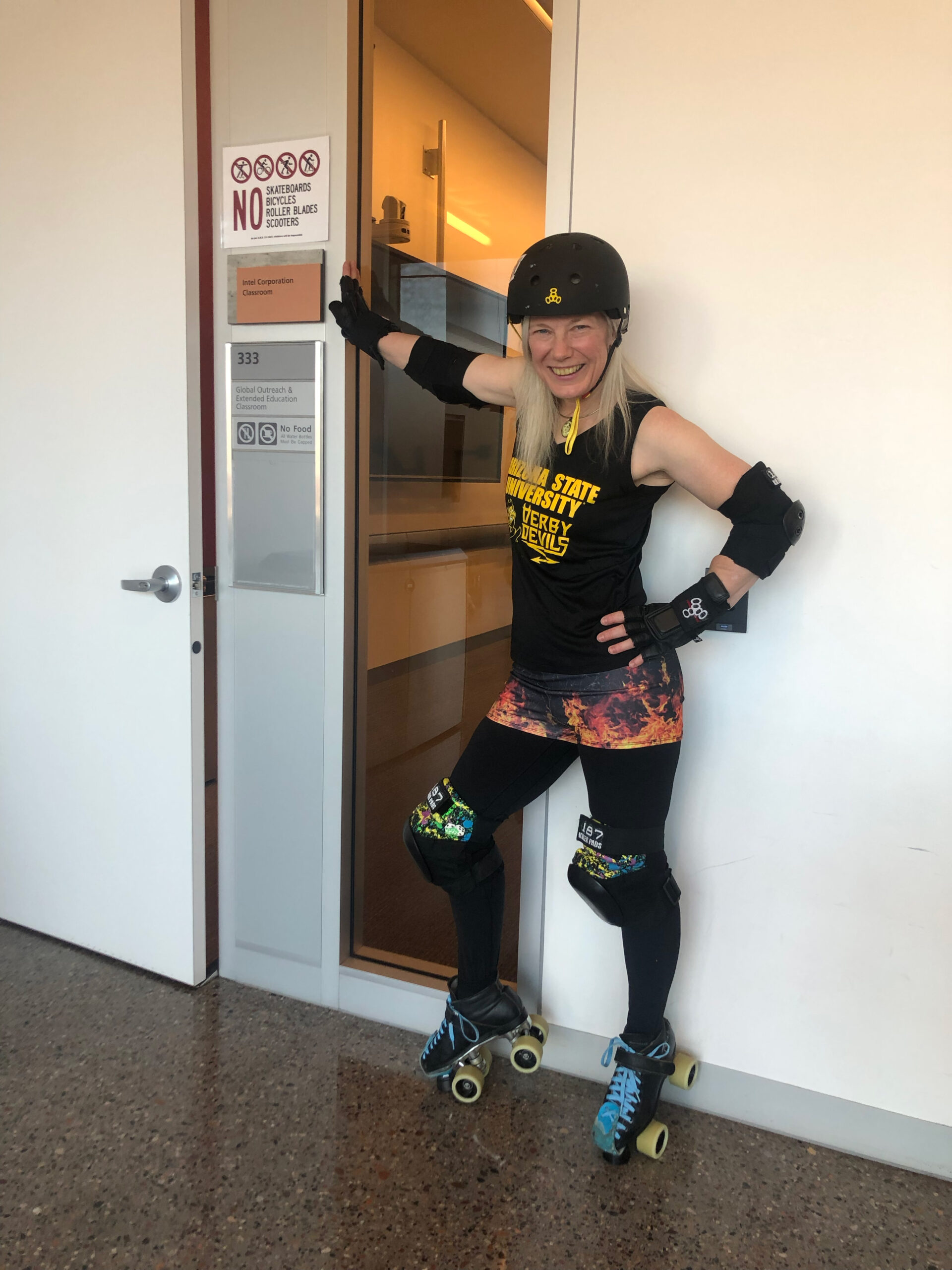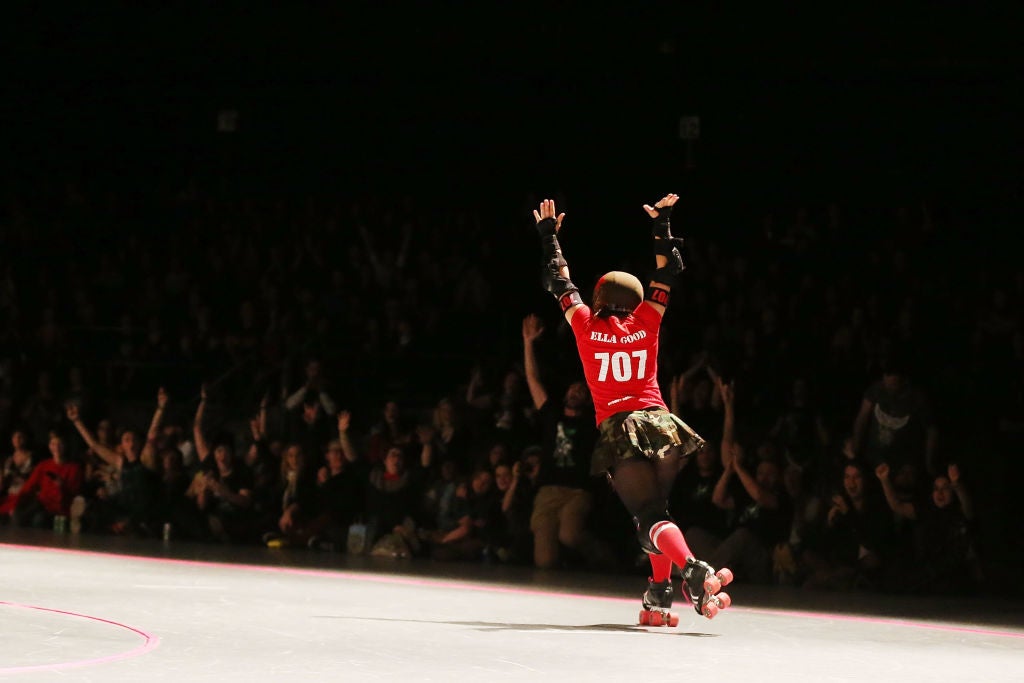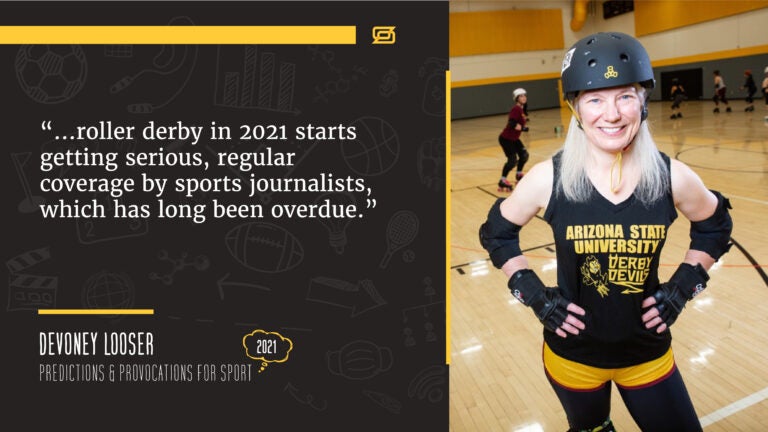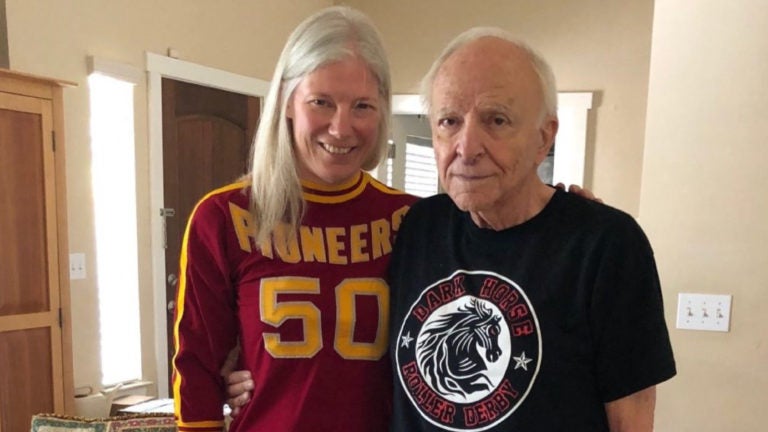Rusty Parts, Roller Derby, and Return to Play
Why this matters
After one year in the Covid-19 Pandemic, adult amateur athletes and smaller community leagues like roller derby will face unique physical and financial challenges in their return-to-play compared to larger-scale organized sports.
If you’re like me, then over the past year, you’ve swapped stories with friends about the last things you did before the pandemic lockdown, on whatever-day-it-was in March 2020. We’ve spoken with sweet, sad longing of the last movie we saw in the theatres, or the last restaurant we ate in, or the last time we were on a plane. Our tales usually start, or end, by recognizing we had no idea at the time that it would in fact be the last movie, restaurant, or plane trip we’d be in a position to enjoy for months and months and months.
My favorite stories of this kind—with which I bore my family and friends, and anyone who will listen, really—are about roller derby. I love roller derby. I miss roller derby. I miss my league and my teammates. Most of the world’s approximately one thousand roller derby leagues remain on hiatus in early 2021, with the exception of teams in Australia and New Zealand. It’s not yet clear how many of these leagues on hiatus will come back.
I hope people understand it’s far more than restaurants and museums and other small businesses or nonprofits that are in danger of dwindling away. We’re facing a possible future with fewer community sports teams. Roller derby may be okay, thanks to a worldwide roller-skating revival during the pandemic. But there are other reasons, too, why the sport might make it through. It’s a majority-women’s sport in which discovering or rediscovering one’s strength, speed, and power is part of the draw.
It’s also one of a small number of sports known for its actively welcoming genderqueer and gender-expansive participants.
I’m grateful it looks like my league, the Arizona Derby Dames (AZDD), will emerge intact, if somewhat worse for the wear, in this pandemic year. That’s especially welcome news for the derbyverse (as we call it), because this is a large league, made up of many teams, playing what’s become a more rare type of roller derby, on a banked track. AZDD is part of the Roller Derby Coalition of Leagues, formed in 2011, to keep banked-track roller derby teams connected and in competition. Before the pandemic, the RCDL had eight banked-track leagues with about four hundred skaters and officials.
Before I joined the league, I knew AZDD was home to a travel team, six local teams, and before the pandemic, a mentoring program for young female athletes, which grew into a junior team. I didn’t know the league also partnered with the Arizona Department of Education to provide free meals to the community. The league’s AZDD Inspire program served a remarkable 750,000 meals between March 2020 and February 2021. Although the league hasn’t been hosting bouts during the pandemic, it’s been active and fighting to survive.
I joined the league, a little over a year ago, when I was 52. I’d decided I wanted to try to play roller derby on a banked-track—at least to try. Although I’d played flat-track roller derby for half of my 40s, trying to transition to a banked track skater, at my age, felt like a last-gasp effort. If I didn’t cross this off of my bucket list in my early 50s, I thought, then it probably wasn’t going to happen.

Things had started off on a high note in the winter of 2020. I’d made it through the first hoop—tryouts. By March 2020, I was still hanging in there, making it to week five of a scheduled 22-week training course for AZDD’s Fresh Meat team. I remember vividly our last pre-lockdown roller derby practice at the Hall of Dames warehouse. Walking into the space was always unfailingly exhilarating. Taking the track in full gear—helmet, mouthguard, elbow pads, wrist guards, knee pads, and quad skates—was similarly heady.
Being around other skaters who were trying to improve and become stronger made me feel part of something wonderful. It sounds corny, but I felt fully alive at those practices, working on building skills with my new teammates. We fell together. We teased each other. We cheered each other on. When I’m telling the rose-colored glasses version of the last time I skated with my teammates before lockdown, these details are the ones on my mind.
In reality, that last pre-lockdown Sunday morning practice wasn’t all rosy. That day, the coaches were having us work on transitions—learning to shift quickly from forward to backward and then to forward again, through a series of steps and turns on wheels. I’d struggled in the past with doing transitions on a flat track. I wasn’t prepared for how much more difficult it was going to be to make these moves on a banked one, where gravity is working against you. I was incredibly frustrated with myself, but one of the coaches stepped out to work with me, one on one. Thanks to her help, I had a flicker of hope that I’d be able to improve. That memory is a mixed but mostly happy one.
Yet another memory of that day is far less pleasant. I had an anxious feeling that morning at practice that I’d go on to have so many times afterward—a gnawing fear of getting sick. One of our teammates told us that although she wasn’t feeling well, she’d come to practice anyway. She sat on the bench with us, so she’d get her attendance credit, but she told us she felt too ill to skate. I was freaked out she’d come to practice at all, because we knew by then there was this contagious, potentially lethal virus going around.
Our league, like many organizations, had rules in place then that said new skater-members, in order to remain in good standing, were allowed only a handful of absences over the course of six months of training. I understood perfectly well then why my teammate had come to practice sick. She didn’t want to jeopardize her place on the team. I might have even done the same thing in her situation, at some past moment in my life. But at that moment, with this weird virus going around, I just wished she hadn’t come. Attendance policies of all kinds now seem so draconian and even foolish, in the wake of the pandemic, but they are especially strange in a community sport. Our own rules put us in regular contact with sick teammates who might jeopardize the wellness of the whole team.

The happy fact is that, in the past year, most roller derby leagues have shown they are concerned and careful about health and safety for players, officials, and fans. I’m proud of our sport for the ways it has shown, by drawing up concrete plans and steps, how it values public health and skater well-being. I wrote last summer about the Women’s Flat Track Roller Derby Association, the non-profit organization that serves as a home for hundreds of roller derby leagues, stepping up to become a pandemic leader in creating guidelines for eventual safer return to play. Those guidelines were so good that they were sought out by sports organizations of all kinds.
So at the moment, what I’m most worried about in roller derby’s “coming back” and returning to play might be a little selfish. I’m concerned not only for the survival of economically fragile leagues and but also about the pandemic’s winnowing out of individual skaters. Some players may be lost to the sport because of its costs, in the form of dues and equipment. Others may be lost because of what the past year has done to weaken our bodies.
Thanks to Facebook groups like “Roller derby over 40” (6000 members) and “Derby over 50” (800 members), I’ve come to know there are many skaters like me out there. Our online conversations in the past several months have been both reassuring and distressing. Most of us report having lost significant muscle over the past difficult year. We’ve aged a year, of course, but we’ve also become less strong than we were before. A lot of us have lost focus and drive, too.
One recent thread on the Derby over 50 Facebook group was about whether it made sense to ditch derby, after this long break from practice and competition. A few skaters chimed in with some version of, “Never quit!” which didn’t strike me as either helpful or realistic. A few others said things like, “Just keep going as long as you can.” It was validating to see there were others who admitted they were struggling. One skater acknowledged an emotion I definitely feel—dread at the thought of trying to get fit all over again, at this age. It gets harder.
I know that eventually I’ll stop playing this fast-moving, full-contact sport, but I’m not quite ready to give up. Of the twelve of us from the pre-pandemic original training team, seven remain who plan to return to practices on the banked track, if they’re able to restart in the coming months. We’ve spent the past year seeing each other only on Zoom for workouts and watching old games to study rules and strategy.
It was like a dream, two weeks ago, when I got to join my AZDD Fresh Meat teammates for our first in-person practice in a year. We met up with our coaches for a masked, outdoor endurance skate. I teared up when I saw faces I hadn’t seen in person since we were all together that Sunday morning in March, just before lockdown. We may have thought we came ready to skate, but most of us proved we were sadly unprepared. Two of us forgot to bring our helmets. Two more of us had equipment failures. I was one of the failures.
My equipment problems were completely preventable and so totally embarrassing. I was skating along with my teammates at a good clip on the asphalt path when I felt my feet give out under me. I pitched forward suddenly—it felt like I tripped—but I managed to break my fall with all of the parts of me that were padded. I was splayed out and trying to figure out what had happened.
One of my training coaches, who’d been bringing up the rear of our skate line, caught up to me and said, “You’ve lost a wheel.”
I looked down at my skate and realized there were only three wheels where four were supposed to be. My coach found my errant wheel, which had rolled away behind me. Because it was red, it was easy to spot, at least.
“That was the hardest fall I’ve taken in a year,” I told her, shaken.
I was glad I’d managed to fall without injury. I dusted myself off and tried to figure out if I was going to have to walk a quarter mile back to my car, in my socks, carrying a broken skate. I was still missing one crucial piece. My coach got down on all fours on the path with me, until we managed to find that missing lug nut.
Next, I had to borrow a teammate’s skate tool. (I should have brought one of those with me, too. Another fail.) I felt incredibly grateful that my coach and teammate had stopped to help me, hampering their own progress and skate time. I put the wheel back on and checked the rest of my skate. I got everything in as good a working order as I could and made it through the rest of the practice.
I learned later exactly why I’d lost a wheel. The day before, when I’d changed out my harder indoor wheels for those softer red outdoor ones, I hadn’t checked any of the parts. The bearings that I’d left in those red wheels for months, parts that were so crucial to making them roll, were worn out. Several had become rusty after a year of disuse and bad storage. This struck me as a perfect metaphor for me as a pandemic skater, too. I’m rusty, from disuse and bad storage.
My roller derby league is now moving toward a planned restart in which everyone—even the most seasoned veterans—will have to take a skills test to prove readiness to play and to demonstrate a general lack of rustiness. We are trying to raise funds to stay solvent and make sure that there is a track to come back to. In the best case scenario, there will be months of practices before any competitions can be scheduled. For me personally, training that might have taken me 22 weeks before the pandemic now might take me twice as long. If I don’t eventually pass the league skills test, I’ll never be drafted onto a team to compete. Most days, that outcome seems okay to me. I’ll be okay if that happens.
Even so, it’s discouraging. I’m trying not to focus on how long it will take to get back into shape. I’m trying not to ruminate about what outcome might or might not be there for me on the other side of whatever strength and ability I’m able to recover. I remember clearly and accurately that I was a happier, healthier, and more fully alive person when I was playing this sport on a team. So for the moment, I’ll keep on training and see what my body can do.
Roller derby promises to make those of us who love the sport into stronger, better connected, and committed people. My league is a model for showing that vibrant amateur sports are a crucial part of public health and our communities. Over the past year, we’ve rightly heard about the pandemic’s toll on professional athletes and would-be Olympians, as well as on exercise-deprived children. There’s been far less coverage and commentary about the pandemic-induced losses for adult amateur athletes and community leagues. We need more support, and we need to support each other, too. I’ll continue to share my roller derby story, as a struggling amateur athlete in her 50s, in the hope it might help more of us to redouble our efforts to roll forward.
Monthly Issue
The Power of Women & Girls in Sport
From participation to coaching, and shattering leadership ceilings, 2020 was slated to be a year of progress for women’s sport. But then came the pandemic.
2021 could still stand to be a significant year of growth for women and girls in sport. What long-standing barriers and future opportunities lie ahead?




